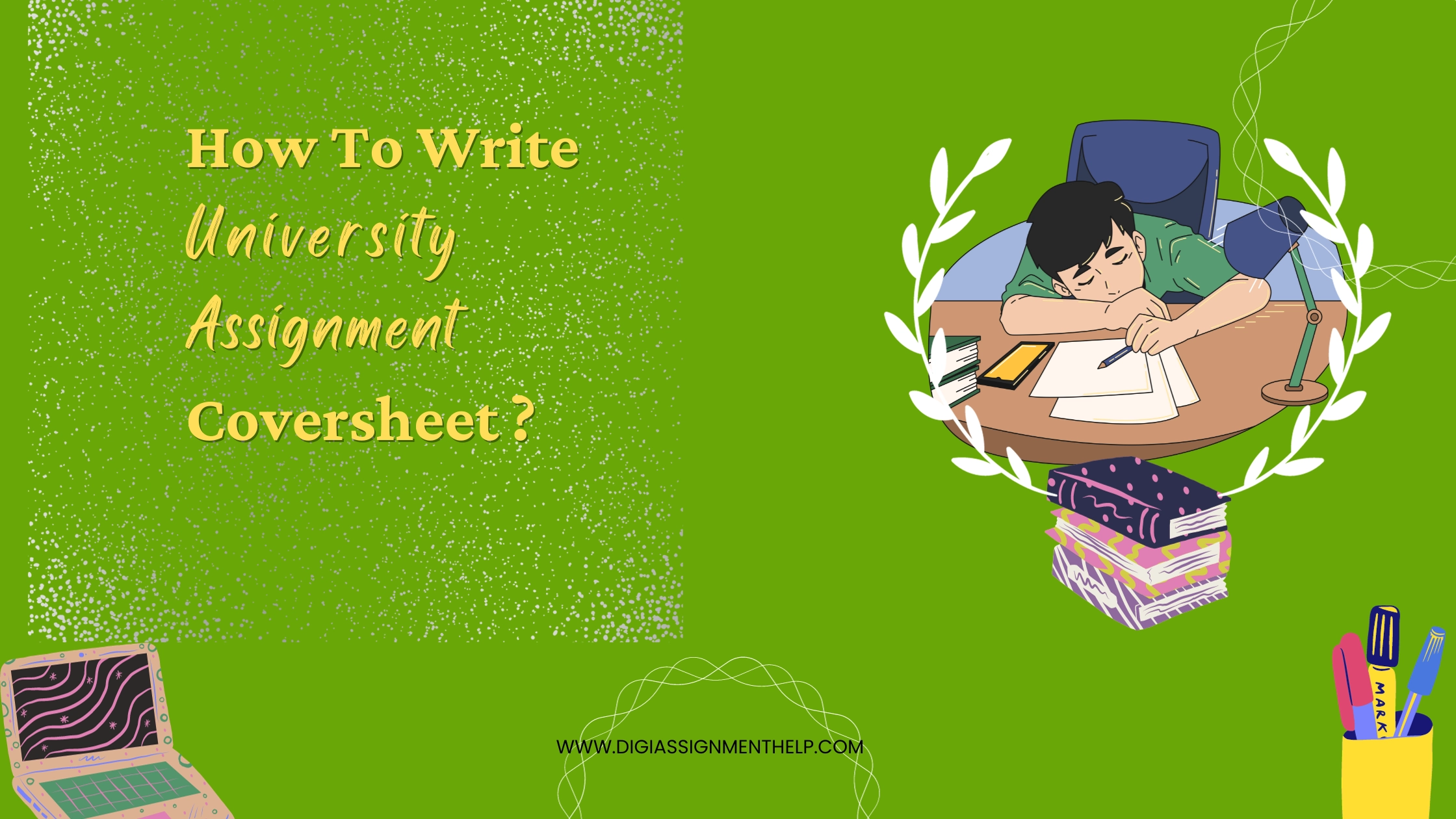How to write a coversheet for a university assignment ?
 18-Oct-2023 09:52 AM
18-Oct-2023 09:52 AM

How to write a cover sheet for a University Assignment?
Cover sheets are the missing piece of an assignment which makes it complete. It's often side-lined to pay attention to the vastness of an assignment. Individuals give their best while writing their papers making sure they adhere to the right format and maintain superb quality.
However, when it comes to the last step of making a cover sheet, they can't be more careless! Often time it is seen as an accessory rather than a necessity. Individuals barely pay any heed or care to follow the proper rules while making a front page. Result? Poor presentation and confusion.
Imagine yourself, who would like to read an assignment whose first impression is terrible? If you are also one of those who get stuck while doing a front page or don’t know the how and why of it, our DigiAssignmentHelp team will guide you at every step !
Why To Maintain A Cover Sheet?
Let’s start by understanding why making a cover page is important. An assignment front sheet acts as your identity. It contains your vital details which helps to set you apart from other students. It represents your name, student ID, subject and other academic details.
This greatly helps the staff to recognise and track the progress of every individual. It’s definitely helpful to professors and administration to maintain records, but its benefits to students are no less!
It makes them more accessible, lets them know how they have performed in each subject and assignment, builds a solid profile, and establishes their identity.
Australian universities like RMIT, ACU and other top-notch universities highly focus on a cover sheet. It is definitely important and beneficial, so how to start?
Continue to read below how you can make an influencing sheet from scratch that will catch the reader’s attention at once and leave an impact.
Also Read - ACU University Assignment Help With Cover Sheet Format
How To Fill A Cover Sheet?
Let’s understand with an illustration. In this case, take the example of RMIT University cover sheet. To fill out a sheet, go to the official website and look for the document for your program.
You can choose to download it and fill it digitally in case it’s a virtual submission. You can take a printout and submit it in hand as well. Read these points carefully:
-
Student Name/ID: Name and number ID are required to identify the person who is submitting the work. It is important in case to contact them. It is filled under two sections- given and family name which is the student’s first and last name respectively.
-
Program Name/Code: Every university student is enrolled in a program that consists of many subjects and forms in the area of study. It could be a post-grad, grad, or diploma degree. For example- MBBS, Bachelor of Science, or BA.
-
Unit/Course Title: This focuses on the topic on which students have prepared projects. Providing this right knowledge simplifies the task of tutors while marking the papers and consulting every query.
-
TAFE: Every Australian tertiary education institution provides space for TAFE. These are institutions that extend affordable education and practical skills. All students are eligible to apply to a TAFE course. In case you have applied for the same, then provide the course number.
-
Campus: This refers to the physical space inside the university where your program classes are held. This data makes it super easy to contact the professors of that course in case of any doubt.
-
Professor/Instructor Name: This is the person responsible for educating on the subject. This makes it comfortable for both students and staff to contact each other in case of doubts and queries.
-
Tutor/Marker: This is the personnel who grades all your projects. It makes it possible to contact them in case of any doubt regarding the grades.
-
Statement of no plagiarism: This statement strictly mentions the plagiarism policy. It establishes a clear understanding between the students and the educational institution. It states:
-
The work submitted is original and can be produced in case the institution asks.
-
Strictly follows zero plagiarism,
-
Permission to share the submitted material in the sphere of the university.
-
This is all the information that individuals are required to provide. In case, you still have any doubts you can consult the faculty or read the instructions available online. Remember, to avoid overwriting and follow the right font to fill in the information. This keeps the text legible and readable. Avoid mentioning wrong information to prevent any confusion.
Mistakes to Avoid
Some of the mistakes that students frequently make are:
-
Inadequate information: Individuals tend to miss some crucial information as they often rush to fill out the form. Even a detail as small as a course name can cause trouble later in locating the right person. Hence it is very important to double-check the form before submitting.
-
Wrong formatting: Oftentimes pupils don’t read the guidelines and tend to fill out the form directly. This leads to many format mistakes. For example, following the wrong font and size, and filling wrong information as a result of not understanding the term's meaning. All these lead to a poor presentation.
-
Grammatical errors: When you don’t double-check the information mentioned and focus on small details like spelling and punctuation marks, they can spoil your presentation. They reduce readability and also leave a negative impact.
-
Skipping on specific details: Top notch universities like RMIT, ACU, ANU have some guidelines that are required to be followed while filling out an official document. The specific requirements are mentioned on the website and must be followed. They are subject to change every year per the syllabus changes. Pupils are expected to follow these before filling out any important sheet.
-
Incorrect information: It is possible to leave in the wrong information. However, this small mistake can cause grave confusion later. It is highly recommended that individuals double-cross all information, or else it can impact their overall progress including their grades.
-
Not proofreading: Making the error of failing to check typographical, grammatical, and spelling errors might be interpreted as a lack of professionalism and attention to detail. This indirectly impacts students' grades and growth.
Also Read - University Assignment Help
Consequences:
-
Difficult to identify: When the above-mentioned mistakes are made, it becomes hard for the professors or the staff to locate the author of the work. This leads to confusion and makes it difficult to grade.
-
Integrity in academics and professionalism: In a set-up where academic standards are highly followed, not respecting the guidelines can show carelessness on your part.
-
Negative impression: They say the first impression is the last. In the same way, when you submit a poorly done front page it leaves a negative impression on you which further impacts your grades.
-
Academic Sanctions: In more serious instances, failure to adhere to the cover sheet rules like the no plagiarism policy may result in academic sanctions, which may affect the student's overall academic progress.
Conclusion
Cover sheets are the key to professionalism, organization, and academic integrity. Following the right guidelines at schools like RMIT and ACU is more than just following the rules- it's a sign of your dedication to academic excellence.
It's about making a good first impression, making sure your identification is correct, and proving your commitment to scholarly behaviour. Hence as a student embrace the use of a cover sheet and extract all its benefits.
Our DigiAssignmentHelp services also make sure students don’t compromise on poor presentation and help them write excellent front page.




























 +44 74 8881 8568
+44 74 8881 8568